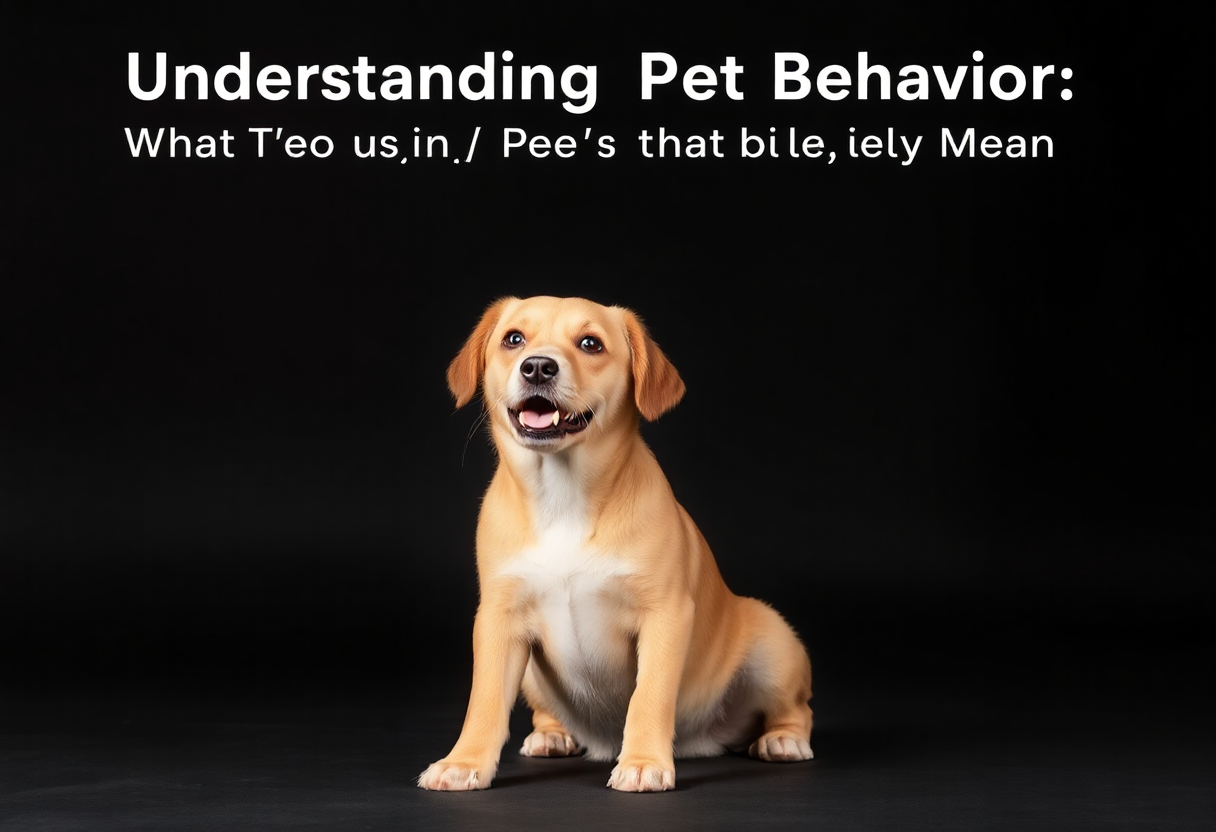Understanding Pet Behavior: What Your Pet’s Actions Really Mean
As pet owners, we often find ourselves puzzled by the behaviors exhibited by our furry friends. Whether it's a sudden burst of energy, an unusual hiding spot, or a peculiar way of greeting us, understanding pet behavior is crucial to fostering a strong bond with our pets. This guide aims to delve into the various actions of pets and what they signify, helping owners interpret their pets' behaviors more effectively.

The Importance of Understanding Pet Behavior
Understanding your pet's behavior can drastically improve your relationship with them. It enables you to respond appropriately to their needs, ensuring their emotional well-being and happiness. Pets communicate through body language, vocalizations, and actions, and being able to interpret these signals can help you become a more attentive and empathetic pet owner.
Common Pet Behaviors and Their Meanings
1. Tail Wagging
A wagging tail is often synonymous with a happy dog, but the nuances in tail movement can indicate different emotions. For example, a slow wag might show uncertainty, while a fast, high wag often reflects excitement. Understanding the context in which your dog wags their tail can provide insights into their feelings.
2. Purring in Cats
While purring is often associated with contentment in cats, it can also indicate discomfort or distress. Pay attention to other body language cues, such as ear position and posture, to interpret whether your cat is purring out of happiness or anxiety.
3. Scratching and Digging
Dogs and cats scratch and dig for various reasons, including marking territory, grooming, or relieving boredom. Providing appropriate outlets for these behaviors, such as scratching posts for cats or chew toys for dogs, can help manage unwanted scratching or digging.
4. Hiding Behavior
When pets seek out hiding spots, it can indicate stress, illness, or a need for solitude. Understanding your pet's hiding tendencies and providing them with safe spaces can help reduce anxiety and create a comforting environment.
5. Vocalizations
Pets use vocalizations to communicate their needs and emotions. Dogs may bark to alert you or seek attention, while cats might meow to express hunger or affection. Observing the context of these sounds can help you respond appropriately.
How to Observe and Interpret Your Pet’s Behavior
To better understand your pet's actions, consider the following tips:
- Be Observant: Take note of your pet’s body language, vocalizations, and actions in different scenarios.
- Consider Context: Analyze what is happening around your pet when they exhibit certain behaviors.
- Keep a Journal: Document your observations to identify patterns in behavior.
Conclusion
By investing time in understanding your pet's behavior, you can create a deeper connection with your furry companion. Recognizing what their actions mean will not only enhance your relationship but also ensure that their needs are met, leading to a happier and healthier life for your pet.